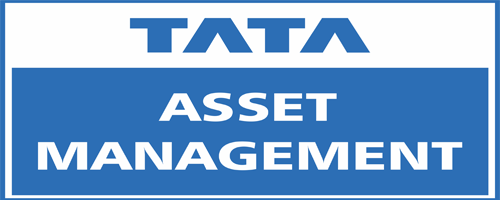1. What do you make of the stock market correction over the past six months? Please share your views on the impact of massive FII selling and the weakening rupee?
The correction in markets is backed by weak corporate earnings and high PE multiple for the first 9mFY25. Nifty earnings have been very subdued to 4% vs expectations of more than 12% at the start of FY25.
The stock market rally seen till Sep’24 which resulted in excessive valuations (MCAP / GDP > 150%) is now getting normalised. The normalisation of valuations was triggered by significant rise in US bond yields, USD rally and India GDP downward revision. As the US economy slows down (signs already visible), dollar index weakens, US bond yield falls and India growth revives, FPI outflows likely to slow down.
On the FII front, there has been a clear shift from India to other emerging markets. FII’s holdings in India has come down very sharply from 21% to 17.5% approx. with total selling of more than a Trillion USD
2. Where are we headed in 2025 in terms of corporate earnings and economic growth?
With regard to earnings estimates, FY25 numbers experienced downgrades after being upgraded / maintained during most of FY24. Furthermore, the cuts for SMIDs accelerated during the quarter. Nifty earnings were downgraded by 2% during the quarter–one of the largest downgrades. The Nifty is forecast to deliver 14% earnings growth in FY26–a sharp bounce from 4% growth registered in 9MFY25. For FY26, we look at demand outlook, three variables are critical. Global Exports, Domestic consumption and Capex.
First, with regard to global markets, while they seem to be stabilising, a recovery is still uncertain as commodity prices remain weak with global PMI contracting. Furthermore, an overvalued INR only adds to the woes.
Corporate capex has shown nascent signs of recovery while household investment in real estate continues to be robust driven by a cyclical upmove and strong policy thrust towards urban housing and urban infrastructure
3. What are the top three sectoral themes that look attractive for investing at present?
On valuation, Financials looks the most attractive. With lowering interest rates in next couple of years, there should be steady growth in the sector. With in Financials, we remain bullish on Private banks, Insurance cos and NBFC-Lending.
Metals as a sector looks attractive, however with high volatility. Positive highlights in Q3: Firm base metal prices, lower CoP inflates earnings, Lower RM cost and higher volume support earnings.
Telecom: With the completion of accelerated 5G rollouts, we expect wireless capex to moderate further for large co, with the focus now shifting to driving greater adoption of home broadband through accelerated fiber rollouts and the scale-up of FWA offerings.
Positive highlights: ARPU growth was driven by residual impact of tariff hikes; 2 out of 3 telcos are back on track with healthy subscriber additions, indicating a positive growth trajectory. DoT has waived off the requirement of bank guarantees to be submitted for spectrum auctions held prior to the reform package
4.What are your expectations for the equity markets in 2025 across various indices?
Indian equity markets have experienced notable correction in recent months. Since October 2024, major indices like the Nifty 50 and Sensex have declined by approximately 13% and 12%, respectively, with mid and small-cap segments facing even steeper corrections.
Several factors have contributed to this downturn, including weak corporate earnings, high inflation, and global trade tensions. Foreign portfolio investors have also withdrawn significant capital, seeking better returns elsewhere.
Despite these challenges, there is cautious optimism for a market rebound in the latter half of 2025. From current levels Nifty 50 can provide ~12-15% upside over a one year horizon while mid and small caps are likely to underperform relatively.
While the Indian equity markets face short-term headwinds, the outlook for the end of 2025 appears more promising, supported by policy measures and sector-specific growth opportunities.
5. How do you plan to navigate tariff uncertainty as it unfolds? Do you believe we are heading toward an era of deglobalization, which, if it happens, could be detrimental to the equity asset class?
As an asset manager, dealing with the ongoing global uncertainty requires a mix of diversification, risk management, and strategic positioning:
Sector Rotation – Tariffs often hit specific industries harder. Shift allocations toward sectors that are less sensitive to trade disruptions, such as domestic-focused industries, healthcare, or consumer staples.
Hedging Strategies – Utilizing hedging strategies via derivatives can help manage volatility caused by trade policies.
Quality and Pricing Power – Focus on companies with strong balance sheets, low debt, and high pricing power, as they can better absorb cost pressures.
De-globalisation is a clear risk for equities related to global demand. Export oriented stocks will face uncertainty but domestic demand driven stocks to get more policy push in an increasingly deglobalized world.
Negative Impact:
Higher Input Costs – Companies reliant on global supply chains face margin pressure.
Reduced Earnings Growth – Slower trade flows can dampen corporate profits.
Market Volatility – Policy shifts and protectionism introduce uncertainty.
Potential Opportunities:
Reshoring Boom – Sectors like automation, infrastructure, and localized manufacturing benefit from nearshoring trends.
Domestic-Focused Stocks – Firms with limited global exposure can outperform.
Select Emerging Markets – Countries benefiting from supply chain diversification (e.g., Mexico, Vietnam, India) may see capital inflows.


